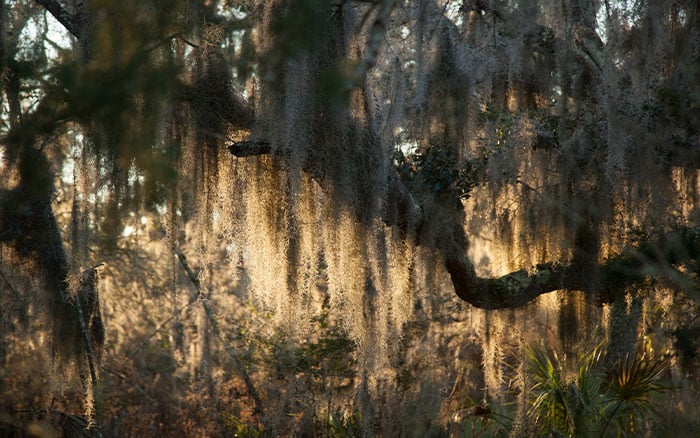It’s October. The nights are getting colder and darker earlier. Many families are buying pumpkins and other halloween paraphernalia in readiness for the big evening at the end of this month.
So why not add to the ghoulish atmosphere by including spooky-looking plants to decorate your garden and the hallway too. And here’s a selection that can help add to that scary, spooky spirit of the night!
Tillandsia usneoides (Spanish Moss)
Starting inside the house, Spanish moss creates the most perfect cob web feel draped from the ceiling, mirrors and pictures!
It’s actually an air plant because of its ability to take water and food from the air and some can grow several metres in length! It will survive happily inside provided it’s misted regularly with either distilled or rainwater and placed in indirect light.
And is certain to be a talking point amongst your visitors as well as helping create the perfect witch’s lair atmosphere!

Tacca chantreiri (Bat Flower Orchid)
Staying inside the house this plant is the ultimate spooky addition! Take one look at its black flowers shaped like Batman’s cape and you’ll see why!
Its other name is cat’s whiskers! The long lasting blooms make excellent cut flowers which last long after the spook-tacular event has ended. Growing in the house it will need shade or part shade plus high humidity so you’ll need to get that mister out (again filled with rain or distilled water).
And, for an extra health boost, give it an occasional liquid seaweed feed.

Phormium ‘Black Magic’
Here’s a hardy plant covered in narrow, deep black colour stems. Although not spooky alone, these can have fake spiders and glow in the dark skulls placed amongst their leaves to greet the unsuspecting trick or treater!
It’s fully hardy and likes to be grown in full sun. With a height and spread of 30cm, it’s the perfect choice for a container to give year round interest plus Halloween decoration.

Sarracenia
These other-worldly looking will fascinate adults as well as children as they find their food by trapping flies and spiders in their elongated openings. How ghoulish is that?! With their attractive, shades of red markings they’re a great addition to the spooky Halloween garden.
They are completely hardy and can be planted in the garden. They do best in almost permanently damp soil, or you could try keeping them in containers with a layer of sphagnum moss around the top of them to help hold the moisture in.
Remember to always water them with rain or distilled water as they hate alkaline soil or water.

Physallis alkekengi (the Chinese Lantern Plant)
Finally, although this plant isn’t truly spooky, its orange lantern shape flowers make it the perfect living addition to the spooky garden.
After the event is over, you can dry the seed cases to make long lasting decorations for inside the house. It does spread easily, rather like mint plants, so you might want to grow it in a container.

So, add a couple of spooky-looking plants to your garden to get into the Halloween spirit this October.

Leave A Comment